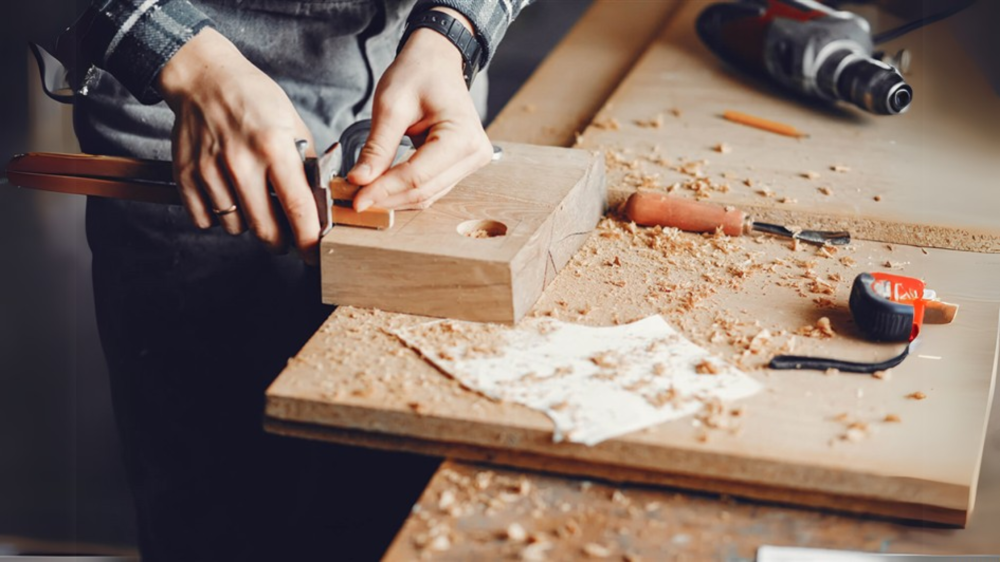The furniture manufacturing process involves several steps ranging from design to implementation, and requires various skills and techniques to provide high-quality and durable products. The process varies depending on the type of furniture (wood, metal, fabric, etc.) and the materials used, but the stages of furniture manufacturing can be summarized in general in the following points:
1. Design and layout
- The first step in furniture making is design . The type of furniture (eg table, chair, cabinet) and its specifications (dimensions, shape, functions) are determined.
- Using design software : At this stage, designers may use specialized software such as AutoCAD or SketchUp to create 3D designs.
- Choosing between styles : The style in which the furniture will be designed is determined (modern, classic, industrial, etc.).
2. Material selection
- The materials are chosen based on the type of furniture and the budget required. The main materials used are:
- Wood : Different types are used, such as oak, beech, or MDF (multi-fiber wood).
- Metals : such as aluminum or steel for industrial or modern spaces.
- Leather or fabric for covering upholstered furniture such as sofas and chairs.
- Glass : used in tables or surfaces.
- Plastic : A popular choice for modern, high-quality furniture.
3. Cutting and preparation
- At this stage, the raw materials are cut to the required dimensions.
- Wood : Cut using saws or special cutting machines. This may involve cutting into boards or smaller pieces depending on the design.
- Metals : Cutting tools such as shears or lasers are used to determine dimensions.
- Other materials, such as fabrics and leather, are cut using shears or specialized cutting machines.
4. Formation and preparation
- Wood : After cutting, the wood may need to be shaped such as engraved or carved to give the furniture its final shape.
- Metals : Formed using specialized machines such as presses or benders to manufacture structures or parts that require specific curves or shapes.
- Joints : If the furniture needs to connect multiple parts together (such as legs, shelves), joint techniques such as screws, nails or adhesives are used.
5. Assembly
- At this stage, the furniture parts are assembled together to form a single structure.
- Wood may be used with nails, screws, or wood screws to attach parts.
- Metals may require welding or screws to secure parts.
- Upholstered furniture is assembled after adding padding or foam to sofas and chairs.
6. Finishing
- Wood : After the furniture is assembled, it is sanded to remove any roughness and then paint or varnish (a layer of insulating paint) is added to give the furniture a smooth and beautiful appearance.
- Metal furniture may require rust protection or aesthetic additions.
- Covering with fabric or leather : Fabrics or leather are attached to the frames using specific techniques to ensure that they are tight and straight.
7. Final assembly
- After all parts are assembled and finishes are applied, the furniture is tested for stability and solidity.
- Additional accessories such as handles, buttons, or embellishments may be added for a final aesthetic touch.
8. Packaging
- Furniture is carefully packed using packing materials to protect it during transit. This may include wrapping pieces in plastic wrap or bubble wrap .
- The furniture is prepared for shipment to the market or customer.
9. Distribution and Sales
- The furniture is distributed to stores or sold directly to customers online or through trade shows.
- The sale may also include providing assembly or delivery services to customers who purchase the furniture.
Additional techniques in furniture manufacturing:
- Modern technologies : such as 3D printing , can be used to design some small parts or furniture that requires intricate details.
- Hand-finishing : For some luxury or traditional pieces, furniture may include hand-finishing processes to add a special artistic touch, such as engravings or aesthetic touches.
- Sustainability : Nowadays, the focus is on using sustainable and recycled materials in the furniture industry, including recycled wood or environmentally friendly materials.
a summary:
Furniture making is a combination of art and craftsmanship, combining contemporary design with traditional techniques. From design, material selection, to assembly and distribution, every step in the process contributes to the production of a functional and beautiful piece of furniture.


